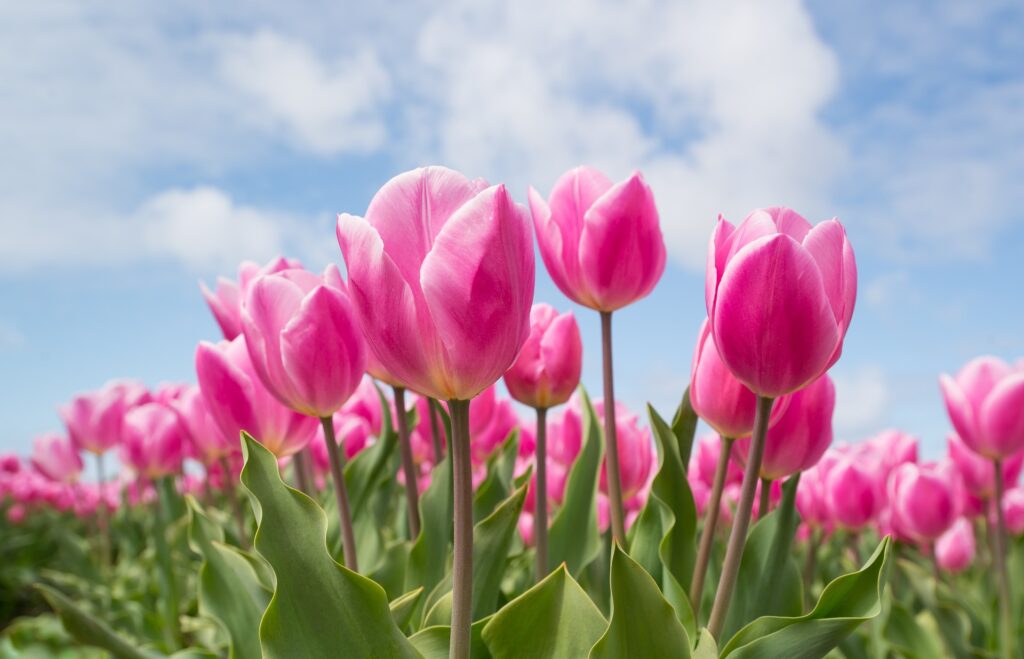Tulips are one of the most iconic spring flowers, known for their vibrant colors and elegant shapes. With the right care, tulips can be a stunning addition to any garden. Here’s a comprehensive guide on growing and caring for tulips.

Types of Tulips
Tulips come in various types, each with unique characteristics. Here are some common types:
| Type of Tulip | Characteristics |
|---|---|
| Single Early Tulips | Early bloomers with cup-shaped flowers, ideal for borders. |
| Double Late Tulips | Peony-like blooms, large and showy, perfect for dramatic displays. |
| Triumph Tulips | Classic tulip shape, available in many colors, great for cut flowers. |
| Parrot Tulips | Ruffled petals, vibrant colors, adds an exotic touch to gardens. |
Growing Season
Tulips are typically planted in the fall and bloom in the spring.
| Season | Activity |
|---|---|
| Fall | Plant tulip bulbs, prepare soil with compost. |
| Winter | Minimal maintenance, ensure bulbs are protected from extreme cold. |
| Spring | Blooming season, regular watering, enjoy the flowers. |
| Summer | Remove spent foliage, store bulbs if needed. |
Sunlight and Water Needs
Tulips thrive in full sun to partial shade, needing at least 6 hours of direct sunlight daily. They prefer well-drained soil and should be watered deeply but infrequently to avoid bulb rot.
Soil Preferences
Tulips prefer well-drained, sandy to loamy soil with a neutral to slightly acidic pH.
| Soil Type | pH Level | Characteristics |
|---|---|---|
| Clay Soil | 6.0-7.0 | Can retain too much moisture, improve drainage. |
| Sandy Soil | 6.0-7.0 | Drains quickly, may need more organic matter. |
| Loamy Soil | 6.0-7.0 | Ideal for most plants, well-draining and nutrient-rich. |
Fertilization and Nutrients
Tulips benefit from light feeding. Use a bulb fertilizer when planting in the fall and again in the spring as growth begins.
| Season | Fertilization Type |
|---|---|
| Fall | Bulb fertilizer high in phosphorus (10-10-10). |
| Spring | Balanced NPK fertilizer (10-10-10) as growth starts. |
| Summer | No fertilization needed, bulbs go dormant. |
Pruning and Maintenance
Tulips require minimal pruning. After blooming, remove spent flowers to prevent seed formation and allow the foliage to die back naturally to nourish the bulbs for next year.
Additional Tips for Growing Tulips
- Mulching: Apply a light layer of mulch to help retain moisture and control weeds.
- Pest Control: Watch for pests like aphids and bulb rot. Use appropriate treatments as needed.
- Winter Protection: In areas with severe winters, cover the planting area with mulch to protect the bulbs from extreme cold.
Conclusion
Tulips are a beautiful and versatile addition to any garden. By selecting the right types, providing proper sunlight, water, and soil conditions, and following basic care guidelines, you can enjoy a stunning display of tulip blooms each spring.